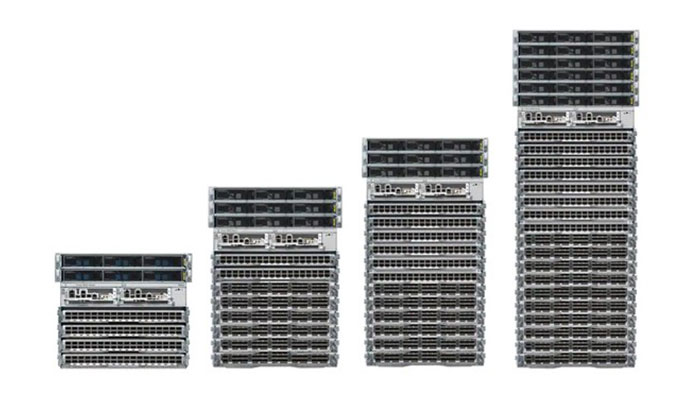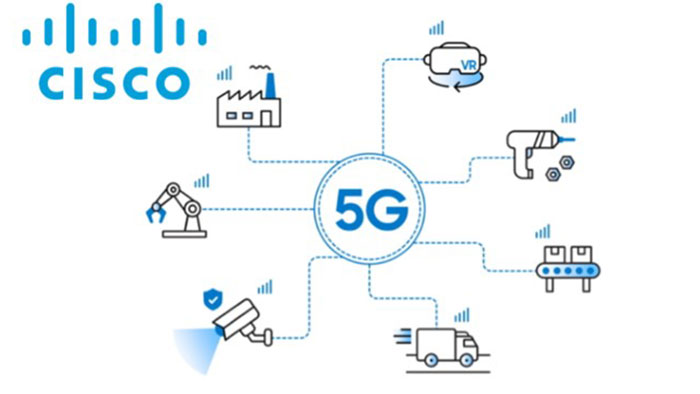The future of the internet is rapidly evolving, and it requires a new breed of high-performance networking equipment to meet the demands of the modern world. The licensed Cisco 8000 series routers are designed to provide the performance, speed, and reliability necessary to build the future internet. In this article, we will explore the benefits of 8000 series routers, their advanced routing and network automation capabilities, and their role in enabling new internet technologies.

The licensed Cisco 8000 series routers are designed for high-performance networking in the most demanding environments. They offer a number of benefits for building the future internet, including:
The licensed Cisco 8000 series routers use advanced silicon technology to deliver high-speed and low-latency networking capabilities. They use custom ASICs (application-specific integrated circuits) to provide wire-speed forwarding and packet processing, which minimizes latency and ensures reliable delivery of packets. The routers also use advanced traffic engineering features to optimize network performance, reducing latency and improving overall network speed.
Cisco 8000 series routers offer advanced routing and network automation capabilities that enable organizations to optimize network performance and reduce operating costs. They use software-defined networking (SDN) technologies to automate network configuration and management, making it easier to manage large, complex networks. They also support advanced routing protocols like BGP (Border Gateway Protocol) and OSPF (Open Shortest Path First) to provide optimized routing and improved network performance.
The licensed Cisco 8000 series routers play a critical role in enabling new internet technologies like 5G, IoT, and cloud computing. They provide the high-speed networking capabilities and low-latency required for real-time applications like autonomous vehicles, remote surgery, and smart cities. They also support the high-bandwidth requirements of cloud computing and provide the scalability and reliability necessary for IoT applications.

The licensed Cisco 8000 series routers can be used in a variety of use cases for building the future internet. Here are some examples:
5G networks: 8000 series routers provide the high-speed networking capabilities and low-latency required for 5G networks, which will enable real-time applications like autonomous vehicles, remote surgery, and smart cities.
Cloud computing: 8000 series routers provide the scalability and reliability necessary for cloud computing, enabling organizations to deliver high-bandwidth applications and services from the cloud.
IoT: 8000 series routers provide the high-speed networking capabilities and low-latency required for IoT applications, enabling organizations to deliver real-time data from sensors and devices.
The licensed Cisco 8000 series routers are designed to deliver high-performance, low-latency networking capabilities required for modern applications, cloud services, and data centers. They come with a range of advanced features that make them ideal for building the future internet. Here are some key features of Cisco 8000 series routers:
Cisco 8000 series routers are powered by the latest and most advanced silicon technology available. They use custom silicon to deliver the highest levels of performance, power efficiency, and scalability. They also support programmable silicon that allows them to adapt to new protocols, traffic patterns, and applications. The silicon technology in Cisco 8000 series routers enables them to deliver high-speed, low-latency networking capabilities.
The licensed Cisco 8000 series routers are designed with software-defined networking (SDN) capabilities that allow for greater flexibility and agility in network management. They support a range of SDN protocols like OpenFlow, P4, and NETCONF that enable centralized network management, automation, and orchestration. SDN capabilities in Cisco 8000 series routers allow for faster service deployment, improved network performance, and reduced operating costs.
Cisco 8000 series routers support a range of advanced routing protocols like Border Gateway Protocol (BGP), Intermediate System to Intermediate System (IS-IS), and Open Shortest Path First (OSPF). These protocols provide high levels of scalability, stability, and fault tolerance, which are crucial for building large, complex networks. The licensed Cisco 8000 series routers also support Segment Routing (SR), which simplifies network programming, reduces network complexity, and improves network performance.
Cisco 8000 series routers are designed to deliver high-speed, low-latency networking capabilities that are critical for modern applications and services. They can support up to 10.8 Tbps of throughput, making them ideal for data centers, service providers, and large enterprises. They also support low-latency forwarding, which is essential for applications that require real-time data processing, like financial trading, online gaming, and multimedia streaming.
Cisco 8000 series routers are designed with a modular and scalable architecture that allows for easy expansion and customization. They support a range of interfaces, including Ethernet, optical, and coherent DWDM, which makes them ideal for a variety of use cases. They also support hot-swappable components, redundant power supplies, and cooling fans, which improves network availability and reduces downtime.
The licensed 8000 series routers support network automation and analytics capabilities that enable real-time network monitoring, troubleshooting, and optimization. They come with built-in telemetry, which provides detailed network performance data that can be used to identify and resolve issues quickly. They also support automation tools like Ansible, which allows for the automation of network configuration and management tasks.
The future of the internet is constantly evolving, and it requires advanced networking equipment to meet the demands of the modern world. The licensed 8000 series routers are designed to provide the high-performance networking capabilities needed to build the future internet. With their advanced silicon technology, software-defined networking capabilities, and support for advanced routing protocols, Cisco 8000 series routers are ideal for organizations that need high-speed, low-latency, and scalable networking capabilities. They play a critical role in enabling new internet technologies like 5G, IoT, and cloud computing, and they offer a range of use cases for building the future internet.
In conclusion, organizations that want to build the future internet need to invest in high-performance networking equipment like Cisco 8000 series routers. These routers offer the speed, reliability, and scalability required for mission-critical applications and enable organizations to deliver real-time data, high-bandwidth applications, and services from the cloud. With their advanced routing and network automation capabilities, 8000 series routers are well-suited for large, complex networks and can help organizations optimize network performance while reducing operating costs. By investing in 8000 series routers, organizations can build the future internet and stay ahead of the curve in an ever-changing technological landscape.